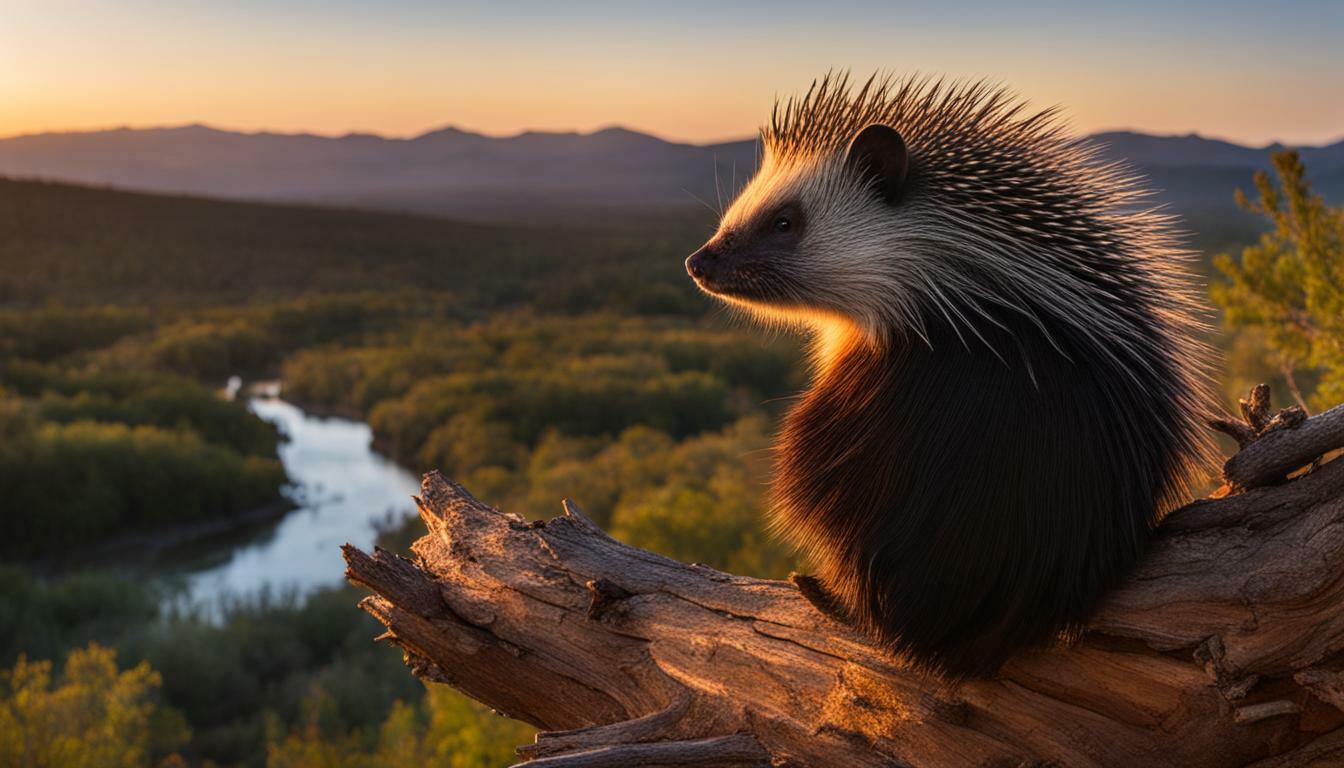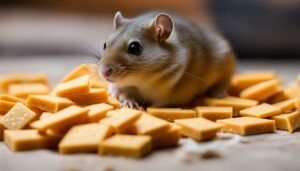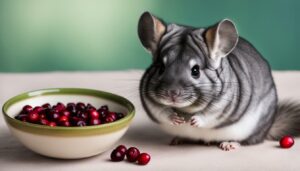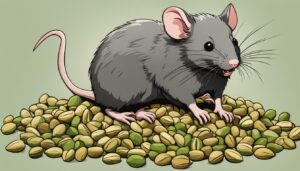If you’re wondering whether porcupines live in Texas, the answer is yes. These intriguing creatures are native to the state and their population is expanding into new areas. Porcupines are the second-largest species of rodent in North America and can be found in various habitats, including forests, rocky landscapes, streams, rivers, and brushy regions. They are adept tree climbers and predominantly active at night.
Contrary to popular belief, porcupines are not able to aim and shoot their quills. Instead, when threatened, they raise their quills and swish their tails from side to side as a warning. If the threat persists, they may turn their prickly backside towards the predator and move in a backward position, showcasing their defensive capabilities.
Porcupines also have a unique defense mechanism – quill shedding. As a means of protection, they shed quills that can get lodged in the face of a predator. It is advised to observe porcupines from a safe distance and to slowly back away if encountered in the wild.
The iNaturalist tool has been instrumental in recording and sharing porcupine observations, leading to a better understanding of their distribution within Texas. Citizen science initiatives like this contribute to ongoing efforts to study and conserve these fascinating creatures.
Key Takeaways:
- Porcupines do live in Texas and their population is expanding into new areas.
- They are the second-largest rodent species in North America.
- Porcupines prefer forested or rocky habitats and are expert tree climbers.
- They are nocturnal and employ defensive behaviors such as quill-raising and tail-swishing.
- Observing porcupines from a safe distance is advised, as their quills can get lodged in the face of a predator.
Porcupine Species in Texas
Texas is home to several species of porcupines, each with its own unique traits. Here are some of the porcupine species you may encounter in the state:
| Species | Characteristics | Distribution |
|---|---|---|
| North American Porcupine | The North American porcupine is the most common porcupine species found in Texas. It has a stocky body covered in long, sharp quills that serve as a defense mechanism against predators. | North, Central, and West Texas, primarily in forested areas. |
| Prehensile-tailed Porcupine | The prehensile-tailed porcupine is unique for its long, muscular tail that it uses to hang from trees. It has shorter quills than the North American porcupine and a slender body. | South Texas, especially in more tropical regions. |
| Black-tailed Porcupine | The black-tailed porcupine is known for its large size and distinctive black-tipped tail. It has a more rugged appearance compared to other porcupine species. | South and West Texas, particularly in rocky habitats. |
These are just a few examples of the porcupine species found in Texas. Each species has adapted to different habitats and displays unique characteristics, making them fascinating creatures to observe in their natural environments.
Continue reading to learn more about the habitat and behaviors of porcupines in Texas.
Habitat of Porcupines in Texas
Porcupines in Texas can be found in a variety of habitats, ranging from dense forests to rocky terrains. These adaptable creatures have established their presence in streams, rivers, and brushy areas as well. Their habitat choices are primarily influenced by the availability of food sources and shelter.
The dense forests provide porcupines with an abundance of vegetation to feed on, including various types of leaves, bark, and twigs. They are particularly drawn to areas with a mix of coniferous and deciduous trees, as these provide a diverse range of food options throughout the year.
Rocky terrains and cliff edges also serve as suitable habitats for porcupines, offering them protection and seclusion. They are skilled climbers and often take refuge in trees or rocky crevices during the day, coming out to forage for food at night.
Habitat of Porcupines in Texas
The presence of porcupines in different habitats across Texas is a testament to their adaptability and resilience. As these prickly creatures continue to expand their population into new areas, it is crucial to maintain awareness and appreciation for their unique habitat requirements.
| Habitat | Characteristics |
|---|---|
| Dense Forests | Abundant vegetation, diverse food sources |
| Rocky Terrains | Protection, seclusion, suitable climbing surfaces |
| Streams, Rivers, and Brushy Areas | Access to water sources, varied vegetation |
- Porcupines in Texas thrive in dense forests, where they can find an abundance of vegetation to sustain their dietary needs.
- Rocky terrains provide porcupines with both physical protection and the opportunity to climb trees or take refuge in rocky crevices.
- Streams, rivers, and brushy areas attract porcupines due to the availability of water sources and a diverse range of vegetation.
Understanding the habitat preferences and requirements of porcupines in Texas is essential for their conservation and coexistence with human populations. By respecting their natural habitat and ensuring the preservation of these diverse ecosystems, we can continue to admire and appreciate these fascinating creatures in the wild.
Texas Porcupine Population
The porcupine population in Texas has been steadily increasing, with these fascinating creatures expanding their territory. Native to Texas, porcupines are the second-largest species of rodent in North America and play a significant role in the state’s wildlife. They are known for their unique quills and distinct behaviors, capturing the curiosity of many nature enthusiasts.
Porcupines in Texas prefer forested or rocky habitats, including streams, rivers, and brushy areas. Their adaptation to these environments enables them to thrive and successfully navigate their surroundings. These expert tree climbers are primarily nocturnal, venturing out at night in search of food and shelter.
Contrary to popular belief, porcupines cannot aim and shoot their quills. When threatened, they raise their quills and swish their tails from side to side as a warning sign. If the threat persists, they may present their prickly backside and move in a backward position towards the predator. Quill shedding is a natural defense mechanism, helping porcupines protect themselves from potential predators. Occasionally, quills may get lodged in the face of a predator, causing discomfort or injury.
Porcupines in Texas: A Closer Look
Observing porcupines in Texas can be an exciting experience, but it’s crucial to do so from a safe distance. These creatures are not aggressive unless provoked, and it is best to admire them from afar. If encountered, it is recommended to slowly back away and give them ample space.
The use of technology has aided in recording and sharing porcupine observations in Texas. Platforms like iNaturalist have allowed enthusiasts to contribute valuable data, leading to a better understanding of porcupine distribution within the state. Citizen science plays a vital role in conservation efforts, and these observations help inform policies and initiatives aimed at protecting these unique animals and their habitats.
| Porcupine Population Facts | Porcupine Behavior Facts |
|---|---|
|
|
The porcupine population in Texas continues to thrive and expand, contributing to the state’s rich biodiversity. These intriguing creatures add to the beauty and wonder of Texan wildlife, captivating those fortunate enough to witness them in their natural habitat.
Porcupine Facts and Habitat in Texas
Porcupines in Texas possess unique characteristics and exhibit intriguing behaviors in their chosen habitats. As the second-largest species of rodent in North America, these prickly creatures have made Texas their home. Contrary to popular belief, porcupines cannot aim and shoot their quills. Instead, when threatened, they raise their quills and swish their tails from side to side as a warning. If the threat persists, they may present their prickly backside and move in a backward position towards the predator.
Porcupines prefer forested or rocky habitats such as streams, rivers, and brushy areas. Their exceptional tree-climbing skills enable them to navigate their surroundings with ease. This ability plays a significant role in their habitat choices, as they often seek refuge in trees during daylight hours and become active at night. They are primarily nocturnal creatures, making their presence more challenging to observe during the day.
Despite their solitary nature, porcupines have been expanding their population in Texas, venturing into new areas. Their expanding presence highlights the importance of understanding their habitat requirements and behaviors for conservation efforts. Studying and recording porcupine observations contribute to our understanding of their distribution patterns within the state.
| Porcupine Facts and Habitat in Texas |
|---|
| Porcupines are the second-largest rodent species in North America. |
| They possess quills for defense, but they cannot shoot them. |
| Porcupines prefer forested or rocky habitats such as streams, rivers, and brushy areas. |
| They have exceptional tree-climbing abilities and are primarily nocturnal. |
| Porcupines shed quills as a defense mechanism, which can sometimes get lodged in the face of a predator. |
If you happen to encounter a porcupine in Texas, it is important to observe them from a safe distance. Porcupines, while generally docile, will defend themselves if they feel threatened. Remember to give them space and avoid any sudden movements. If you find yourself in close proximity to a porcupine, slowly back away to prevent any potential quill injuries. It is crucial to respect these fascinating creatures and their natural habitats.
The use of tools like iNaturalist has proven to be valuable in recording and sharing porcupine observations. Citizen science plays a crucial role in enhancing our knowledge of porcupine distribution in Texas. By contributing to these efforts, we can collectively make a difference in preserving and protecting these remarkable animals.
Porcupine Distribution in Texas
Porcupines are distributed across various regions of Texas, showcasing their adaptability to different environments. They can be found in forested areas, rocky landscapes, streams, rivers, and brushy regions throughout the state. These unique creatures have successfully established themselves in diverse habitats, allowing them to thrive in a range of conditions.
While porcupines are known for their exceptional tree-climbing abilities, they also inhabit ground-level habitats such as rocky outcrops and dense vegetation. Their distribution patterns indicate a preference for areas with ample food sources and suitable shelter. The dense forests of East Texas and the arid landscapes of West Texas both provide suitable habitats for porcupines.
Within Texas, porcupine populations exhibit some regional variations. They can be observed in the Panhandle, the Hill Country, the Piney Woods, and the Trans-Pecos regions. Their presence in these diverse regions highlights their ability to adapt to different climates and ecosystems.
| Region | Distribution |
|---|---|
| Panhandle | Porcupines are sparsely distributed in the Panhandle region of Texas. |
| Hill Country | The Hill Country is home to a thriving population of porcupines, commonly found in the canyons and rugged terrain. |
| Piney Woods | Porcupines are frequently spotted in the Piney Woods, where the dense forests provide an ideal habitat. |
| Trans-Pecos | The Trans-Pecos region is another area where porcupines can be observed, taking advantage of the unique desert and mountain environments. |
The distribution of porcupines in Texas is an ongoing subject of study and observation. Citizens and wildlife experts alike contribute to the understanding of porcupine populations by recording sightings and sharing observations through platforms such as iNaturalist. This citizen science initiative helps to create a comprehensive record of porcupine distribution within the state, furthering our knowledge of their habitat preferences and overall presence in Texas.
Tree Climbing Abilities of Porcupines in Texas
Porcupines in Texas are adept climbers, often inhabiting trees in search of food and shelter. Their exceptional tree-climbing skills make them a unique species within Texan wildlife. These fascinating creatures have adapted to their environment, utilizing trees as a key element of their habitat.
Porcupines prefer forested or rocky areas, where they can find suitable trees to climb. They are known to inhabit various tree species, including conifers and deciduous trees. Their strong claws and muscular bodies enable them to maneuver effortlessly among the branches, providing them with a safe refuge from predators and access to their preferred food sources.
When observing porcupines in Texas, it is not uncommon to witness their impressive climbing abilities. They skillfully navigate the treetops, often moving with ease from one branch to another. This behavior allows them to find vegetation to feed on, such as leaves, bark, twigs, and buds. By inhabiting trees, porcupines are able to avoid ground-dwelling predators and have better access to food resources.
Porcupines’ tree-climbing abilities demonstrate their remarkable adaptability to their surroundings. Their skilled navigation of the tree canopy showcases their unique behaviors and makes them an intriguing species to observe in the wild.
Porcupine Defense Mechanisms in Texas
Porcupines in Texas have unique defense mechanisms that help protect them from predators. Contrary to popular belief, porcupines cannot aim and shoot their quills, but they rely on a combination of behaviors to ward off threats. When confronted, porcupines will raise their quills and swish their tails from side to side, creating a visual warning to potential predators. This display serves as a deterrent, as the sharp quills are easily visible and can cause significant harm if touched.
If the initial warning signs are ignored and the threat persists, porcupines resort to their primary defense mechanism – presenting their prickly backside. In a backward position, they move towards the predator, exposing their quills for maximum effectiveness. This strategy makes it nearly impossible for predators to attack without getting injured. The quills are sharp, barbed, and easily detachable, meaning they can become lodged in the face of a predator, causing painful injuries and infections.
Porcupines also rely on their excellent sense of hearing and smell to detect potential danger. They are adept at climbing trees, which offers them both a safe vantage point and an escape route from ground-based threats. Due to their nocturnal nature, porcupines are most active during the night, when they can avoid many predators by hiding in trees or dens.
| Porcupine Defense Mechanisms in Texas |
|---|
| 1. Raising quills and tail swishing |
| 2. Presenting prickly backside and moving backward towards predator |
| 3. Climbing trees to escape ground-based threats |
| 4. Nocturnal habits to avoid predators |
Understanding and appreciating the defense mechanisms of porcupines is crucial for their conservation. By respecting their space and observing them from a safe distance, we can coexist with these fascinating creatures. If you happen to encounter a porcupine in the wild, it is best to back away slowly and not attempt to touch or interact with them. Remember, these animals are just trying to protect themselves and their territory.
The use of citizen science platforms like iNaturalist has significantly contributed to our knowledge of porcupine distribution in Texas. This tool allows nature enthusiasts to record and share their porcupine observations, helping researchers and conservationists gain valuable insights into their population numbers and geographic range. By contributing to such initiatives, you can play an active role in the conservation efforts aimed at preserving these intriguing creatures and their natural habitats.
Quill Shedding and Predation Interactions in Texas
Porcupines in Texas have a fascinating defense mechanism that involves shedding their quills. Contrary to popular belief, porcupines cannot aim and shoot their quills at predators. Instead, when threatened, they raise their quills and swish their tails from side to side as a warning. If the threat persists, porcupines may turn their backs towards the predator and move in a backward position, presenting their prickly quills as a deterrent.
This shedding of quills is an effective defense strategy. When a quill comes into contact with a predator, it easily detaches from the porcupine and becomes lodged in the predator’s face or body, causing discomfort and pain. The quills have barbs that make removal difficult, increasing the predator’s vulnerability and reducing the likelihood of future attacks. This defense mechanism allows porcupines in Texas to protect themselves and deter potential predators.
Porcupines, being slow-moving and having their quills as a primary defense system, have limited interactions with predators in Texas. However, when encountering larger predators such as coyotes, bobcats, or mountain lions, the quills prove to be an effective deterrent. The predators quickly learn to avoid engaging with porcupines, as the consequences of a quill-inflicted injury can be painful and potentially life-threatening.
| Predator | Interactions with Porcupines |
|---|---|
| Coyotes | Learn to avoid porcupines after experiencing quill injuries |
| Bobcats | Encounter porcupines infrequently due to their limited range overlap |
| Mountain Lions | Exercise caution around porcupines and avoid direct confrontations |
These interactions between porcupines and predators in Texas contribute to the overall balance and biodiversity of the ecosystem. Porcupines play a role in keeping predator populations in check, as predators learn to avoid engaging with them. Studying these interactions provides valuable insights into the coexistence of different species within the Texan wildlife community.
Observing Porcupines in Texas
If you come across a porcupine in Texas, it’s essential to observe them from a distance and take necessary precautions. Porcupines may seem cute and cuddly, but their quills can cause significant pain if you get too close. Keep in mind that porcupines are wild animals and should not be approached or handled without proper training and experience.
When trying to spot porcupines in Texas, look for their preferred habitats such as forested areas, rocky landscapes, streams, rivers, and brushy regions. These are the places where you’re more likely to find them. Additionally, keep in mind that porcupines are primarily nocturnal, so it’s best to go out during the evening or early morning hours for a better chance of spotting them.
It’s important to remember that porcupines are excellent tree climbers. If you’re near an area with trees, pay attention to the branches above you as porcupines often seek refuge or food in the treetops. However, maintain a safe distance and avoid getting directly under the porcupine to prevent any accidental quill injuries.
| Porcupine Observation Tips: |
|---|
| 1. Observe from a safe distance using binoculars or a camera with zoom capabilities. |
| 2. Avoid loud noises or sudden movements that may startle the porcupine. |
| 3. Respect their space and do not attempt to feed or touch them. |
| 4. If you encounter a porcupine on a trail or path, give it space to move freely and safely. |
By following these observation tips, you can safely enjoy watching porcupines in their natural habitat while minimizing the risk of any unnecessary harm. Remember, wildlife deserves and requires our respect and admiration, so let’s do our part to ensure their wellbeing.
Recording Porcupine Observations in Texas
The utilization of the iNaturalist tool has significantly contributed to recording and sharing porcupine observations, helping advance our knowledge of their distribution in Texas. This citizen science platform allows individuals to document their encounters with porcupines, providing valuable data for ongoing research and conservation efforts.
By uploading photographs and other relevant information, observers can contribute to a growing database of porcupine sightings across the state. This data helps researchers and wildlife enthusiasts better understand the distribution patterns of porcupines in Texas, including their presence in different regions and any notable variations.
Through the iNaturalist tool, users can also benefit from the knowledge and expertise of a community of naturalists and researchers. Fellow enthusiasts can help with species identification, provide additional insights into porcupine behavior and ecology, and engage in discussions about their encounters in the field.
Benefits of Participating in iNaturalist
Participating in iNaturalist not only allows you to contribute to our understanding of porcupine distribution in Texas but also offers several personal benefits. By documenting your observations, you become part of a larger network of nature lovers who are passionate about exploring and preserving the natural world. Additionally, the iNaturalist platform helps you build your own personal record of encounters and sightings, providing a visual diary of your experiences with porcupines and other wildlife.
| Key Benefits of iNaturalist | |
|---|---|
| Contribute to scientific research | Expand our knowledge of porcupine populations in Texas |
| Become part of a community | Connect with fellow nature enthusiasts and experts |
| Personal record keeping | Create a visual diary of your wildlife encounters |
So, whether you’re a seasoned naturalist or a budding wildlife enthusiast, consider participating in iNaturalist to record your porcupine observations in Texas. Your contributions can make a meaningful impact on our understanding of porcupine distribution and conservation in the state, while providing you with a rewarding and enriching experience in the process.
Conclusion
Porcupines are indeed a part of the Texan wildlife, with their presence in various regions of the state highlighting their adaptability and importance within the ecosystem. These fascinating creatures, native to Texas, have a growing population and can be found in forests, rocky landscapes, streams, rivers, and brushy areas. They are the second-largest rodent species in North America, and their habitat preferences, such as their affinity for climbing trees, make them distinct members of the Texan fauna.
Contrary to popular belief, porcupines do not shoot their quills, but instead, they raise their quills and swish their tails from side to side when threatened. If the threat persists, they may turn their prickly backside towards the predator and move in a backward position. Quill shedding is a defense mechanism and can sometimes result in quills getting lodged in the face of a predator.
When encountering porcupines, it is important to maintain a safe distance and avoid any attempts to touch or approach them. Observing them from afar and appreciating their behaviors from a respectful distance is the best way to appreciate these unique creatures. Additionally, if you come across a porcupine in the wild, it is recommended to back away slowly to give them space and avoid any potential conflicts.
The use of tools such as iNaturalist has greatly contributed to the study and documentation of porcupines in Texas. Citizen science initiatives have played a crucial role in recording and sharing porcupine observations, leading to a better understanding of their distribution within the state. Through these efforts, we can continue to deepen our knowledge of these intriguing animals and ensure their conservation for future generations to enjoy.
FAQ
Do porcupines live in Texas?
Yes, porcupines do live in Texas. They are native to the state and their population is expanding into new areas.
What species of porcupines are found in Texas?
There are different species of porcupines found in Texas, including the North American porcupine.
What is the preferred habitat of porcupines in Texas?
Porcupines in Texas prefer forested or rocky habitats, such as streams, rivers, and brushy areas.
How large is the porcupine population in Texas?
The porcupine population in Texas is expanding, but specific numbers are not available.
What are some facts about porcupines in Texas?
Porcupines are the second-largest species of rodent in North America, and they are nocturnal creatures.
How are porcupines distributed in Texas?
Porcupines can be found in different regions of Texas, with variations in their distribution patterns.
Can porcupines climb trees in Texas?
Yes, porcupines in Texas are expert tree climbers and their ability to navigate trees influences their habitat choices.
What are the defense mechanisms of porcupines in Texas?
Porcupines in Texas raise their quills and swish their tails from side to side when threatened. If the threat continues, they may present their prickly backside and move in a backward position towards the predator.
Do porcupines shoot their quills in Texas?
No, porcupines in Texas cannot aim and shoot their quills. This is a common misconception.
What happens when a predator encounters a porcupine in Texas?
When threatened, porcupines in Texas may shed quills as a defense mechanism. These quills can sometimes get lodged in the face of a predator.
How should one observe porcupines in Texas?
It is advised to observe porcupines from a distance and to back away slowly if encountered in Texas.
How can porcupine observations in Texas be recorded?
The use of the iNaturalist tool has helped in recording and sharing porcupine observations in Texas, leading to a better understanding of their distribution.




